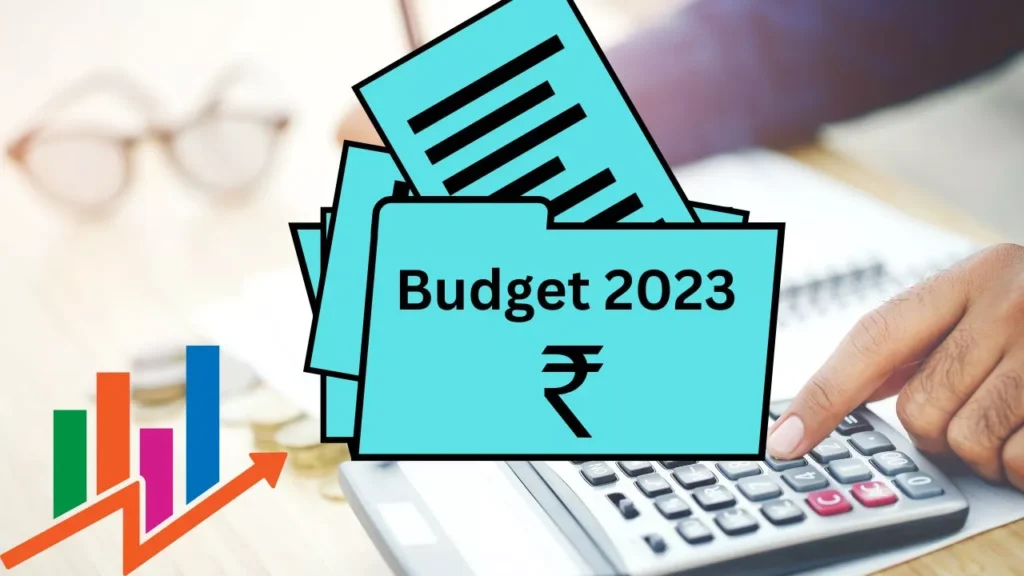The union budget 2023 date was fixed as Wednesday, 2nd February 2023, and it was on this date that Finance Minister Nirmala Sitharaman presented the budget 2023 in the parliament with an influential speech.
The union budget 2023 has received a mixed response from the masses, many a green with the finance minister’s view of how this year is a “golden opportunity for India” while others pointing out how essential emphasis on agricultural, social and property-related issues are missing from the budget.
In this article, we will be presenting a detailed review and summary of the union budget for this year so that students, traders and general citizens can benefit from this crucial financial move.
Primary guidelines of Union Budget 2023
The primary guidelines for the 2023 union budget has set up the following expectations for the coming fiscal year.
- The total expenditure budget up on which the 2023 fiscal year has been planned amounts to 45,03,097 crore INR.
- Total receipts of 2023-24 are expected to be at an increase of 11.7% in comparison to last year and amount to 27,16,281 crore INR.
- The revenue deficit has been targeted to be 2.9% of the GDP whereas the fiscal deficit has been targeted to be 5.9% of the GDP
- The nominal GDP growth rate has been expected to be a huge 10.5% with inclusion of inflation.
- Highest amount allocated to any ministry goes to the Ministry of Railways which has received 49% of budget allocation in 2023-24.
- Total expenditure of 4,22,162 crore INR has been set aside for the Defense Ministry by the government.
Union budget 2023 Explained - Significance and Prediction
The union budget 2023 is the last budget that the PM Modi government will introduce before the 2024 lok sabha elections. This budget was carefully crafted to summarise the important achievements of the past 9 years as well as to generate new hope among Indian citizens towards more significant opportunities and developments.
According to the Constitution Of India, the annual financial statement provides an estimation of revenue and capital receipts. It provides an estimation of expenditure and provides a number of ways and means to increase government revenue. It directs the central and state governments to focus on key areas of development by formulating an economic, financial and to some extent social policy for the upcoming fiscal year.
Union budget 2023 Highlights for All Sectors
The union budget 2023 comes with a number of key highlights which are crucial to understanding no matter which sector of the society you are working in. Some key union budget 2023 highlights are such:
- ITR processing time was reduced from 93 days to 16 days.
- 5 lakh indigenous students will benefit from the 740 Eklavya model residential schools. 38800 teachers and other staff will be hired for their education.
- The credit guarantee for the MSME plan has been updated in the union budget 2023. The cost of credit will be cut by one per cent.
- Digilocker has been awarded a newfound importance when it comes to KYC maintenance for Indian citizens. You will now be able to make all changes in one document and use Digilocker for this purpose.
- New slabs have been introduced in the tax regime and great remittances are to be provided to income taxpayers.
- 157 new nursing colleges will be introduced across the country.
- The concept of Amrit Kaal discussed in detail in the union budget 2023 spans four transformative opportunities that India is face to face with today.
Union budget 2023 Income Tax- tax slab, what is it?[As per New Tax Regime]
There are different percentages of tax that people have to pay, depending mainly on how much they are earning or profiting. This year’s main focus has been on income tax. Hence the union budget 2023 has divided the income of individuals in the country into tax-paying brackets. However, some unique changes have been introduced for this fiscal year. There will be no tax on income up to 7 lakh a year. The highest applicable tax rate has been reduced to 39 from 42.7 per cent.
- Income of 3 lakh INR or under: non-taxable
- Income of 3 lakh INR to 6 lakh INR: 5% tax
- Income of 6 lakh INR to 9 lakh INR: 10% tax
- Income of 9 lakh INR to 12 lakh INR: 15% tax
- Income of 12 lakh INR to 15 lakh INR: 20% tax
- Income of more than 15 lakh INR: 30% tax
INCOME | TAX LEVIED |
> 3 Lakh Per Annum | Non-Taxable |
3 – 6 Lakh Per Annum | 5% |
6 – 9 Lakh Per Annum | 10% |
9 – 12 Lakh Per Annum | 15% |
12 – 15 Lakh Per Annum | 20% |
15 Lakh Per Annum | 30% |
The surcharge rate of income tax for those earning more than 50 lakh INR in a year has been reduced from 37% to 25% through the union budget 2023 new tax regime.
The union budget 2023 has stretched the income rebate limit from 5 lakh INR to 7 lakh INR.
The new 2023 tax regime will be a default tax regime from now on. Citizens can still avail the benefits of the old tax regime on an opt-out basis. This is a hugely important factor to understand about the union budget 2023.
Union budget 2023 Focus
Union budget 2023 is a controversial budget which has received both praise and criticism from various sectors of India. Broadly put, the focus of the union budget 2023 is on income tax relief, sustainable development, fiscal consolidation and capex.
- Income tax relief: the government has provided a huge relief to income taxpayers in the union budget 2023 and this is definitely one of the most important highlights this year. Tax slabs might even in the future be cut down from 7 to 5. Income tax relief has been initiated to provide direct comfort and aid to general workers of the country. There has been a great focus on connecting National well-being to individual well-being in this year’s budget.
- Investment and expenditure: according to the report issued by the government, there is a greater focus on investment and capital expenditure. Capital investment outlet has been increased by 33% to INR 10 lakh crores. Effective capital expenditure has been set at 4.5% of GDP. The Finance minister also took this opportunity to summarize the milestones that the present government has reached in the past through investment, expenditure and aid.
- Infrastructure and green growth: a great focus on sustainability has been laid out by the union budget 2023. While introducing the Amrit Kaal, the concept of infrastructure development and green growth was discussed. The Finance minister also directed focus at the Atmanirbhar Clean Plant Programme at an outlay of 2200 crore INR. This program is to boost the availability of quality planting material which will yield high-value horticultural crops. Urban infrastructure development fund (UIDF) will be established. 500 ‘Waste to Wealth’ plants will be established under the Gobardhan Scheme at an outlet of 10000 crores INR. 10000 bio-input resource centres will also be established.
- Inclusive development and youth power: The global agenda of India will rely heavily on inclusive development and youth power. The outlay of PM hours Yojana has been enhanced by 66% to over 79000 crores INR. 2.4 lakh crore INR has been set for the railways industry which is the highest-ever capital outlay for this sector. Mantri Kaushal Vikas Yojana 4.0 is to be launched in 2023. Union budget 2023 has also reduced the number of basic customs duty rates on goods other than textile and agriculture from 21 to 13.
Amrit Kaal - The Saptarishis of Growth
The union budget 2023 has introduced an entirely new, implementable concept of the Amrit Kaal, literally translating to ‘The Elixir Period’. Broadly, the Vision for Amrit Kaal introduces three major milestones:
- Opportunities for citizens with focus on the youth: employment generation for the youth and integration of the younger generation into the global digital culture is a major motive of Amrit Kaal.
- Growth and job creation: the Government of India will focus on inclusive growth and job creation through which every man and woman of the country is able to benefit regardless of their social or economic background.
- Strong and stable macroeconomic environment: macroeconomic environment basically refers to a sustainable GDP growth at the national level, while also taking into account the social aspects like distribution of resources, inclusion and education.
The seven major priorities of Amrit Kaal include:
- Inclusive Development
- Reaching The Last Mile
- Youth Power
- Financial Sector
- Green Growth
- Unleashing The Potential
- Infrastructure and Investment
Further Digital Growth for India in 2023
There are several directives that the union budget 2023 has set for further digital growth in different sectors of the economy.
- The government has directed the building of Digital Public Infrastructure for farmers involved in agriculture and cooperatives.
- National Digital Library to be set especially for children and adolescents.
- Teacher’s training will be streamlined with the help of District Institutes of Education and Training.
- Bharat SHRI will digitize even those documentations which were carried out before the advent of the modern world. Around 1 lakh ancient inscriptions will be digitized.
- For the first time, the Indian government has talked of artificial intelligence as an aspect of the union budget 2023, where India will work on making AI with three specialized AI centres to be set up in the country.
- National Data Governance Policy will be introduced in 2023.
- 100 labs for 5G services will be set up in the country which will develop applications for the new generation.
Conclusion
The union budget 2023 has set a realistic yet cheerful approach that India can take for the coming year. While it has focused on many areas, in some ways it has failed to include specific directives on how to realize the unique aspirations set by this budget. Now it will rest upon the government to bring these ambitions to reality in a holistic and inclusive way.
FAQs
- What is the PM Awas Yojana budget for 2023?
The new PM Awas Yojana budget for 2023 has been raised to 79000 crores INR.
- How much tax will I pay under the new tax regime for an income between 6 lakh to 9 lakh INR per annum?
For an income between 6 lakh to 9 lakh INR per annum, you will be paying a 10% tax under the new tax regime.
- What is the role of the Green Hydrogen Mission?
The Green Hydrogen Mission mentioned in the union budget 2023 is a green energy initiative which will reduce dependency of India on fossil fuels for its industrial development.

